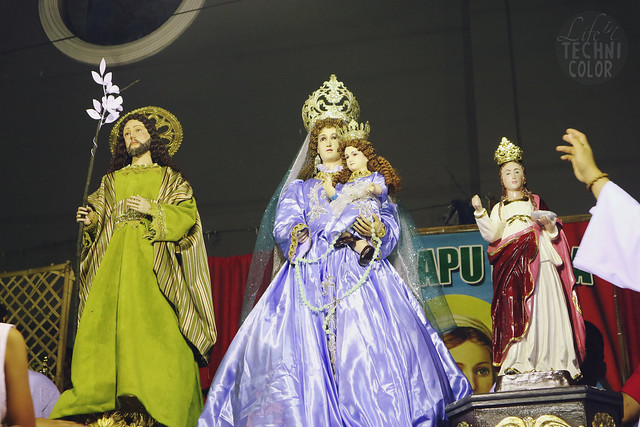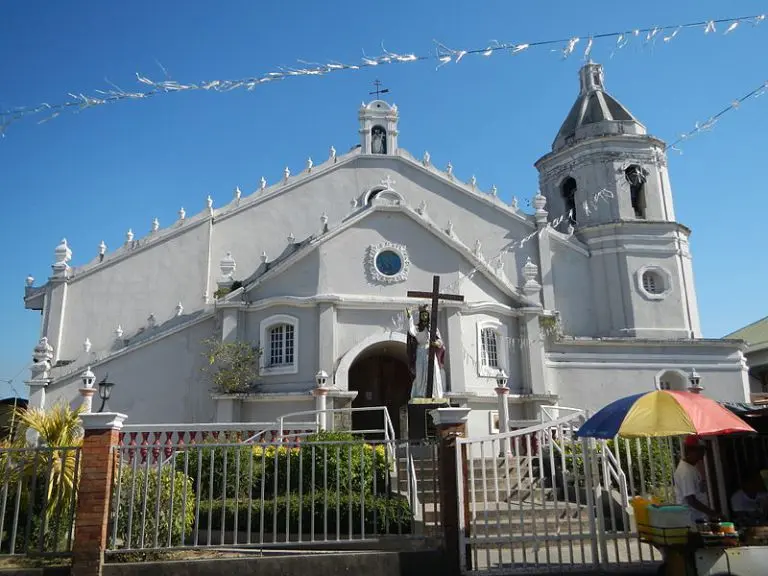The Municipality of Sasmuan is a fourth-class municipality in the coastal province of Pampanga.
Sasmuan is situated in the southern part of the province of Pampanga. Alongside the municipality of Macabebe and Lubao, Samuan is one of the three municipalities in the province of Pampanga along the coastline of Manila Bay.
It is bordered to the north by the municipalities of Guagua and Minalin; to the east by the town of Macabebe; to the west by the municipality of Lubao, and to the south by Manila Bay. The majority of Sasmuan’s area is fish ponds.
The Municipality of Sasmuan is known as an agricultural town where rice and fish are the primary products of the place.
In the present times, the municipality of Sasmuan is well known in the food industry because of the assorted delicacy products that entered the global market.
History
The municipality of Sasmuan was formerly known as “Sexmoan” not until January 15, 1991, under the Republic Act. No. 6976, changing the name Sexmoan to Sasmuan. The municipality’s old name in the Spanish Language was Sexmoán, as was originally recorded by the Spanish friars.
According to a 17th-century Kapampangan dictionary, the name “Sasmuan,” is alleged to originate from the Kapampangan word “sasmo,” which translates to “a meeting place.” Sasmuan, consequently, is synonymous with “Pitagmuan” or “meeting place of the datus” or “meeting point”.
Some also suggested that the name was derived from the word “Sasa,” a type of local bamboo
The town was named “Sasmuan” because the place was where Kapampangans meet when they were at war with Chinese residents living in Guagua.
On January 15, 1991, it was changed concurrently into the name “Sasmuan,” since the earlier name, Sexmoán, signified a very negative suggestive meaning not only to the town but also to the folks living within the municipality itself due to the culture of the people of believing that the prefix “Sex-” had somewhat to do with the English word “sex.”
The town of Sasmuan already had a highly developed system of government even before the era of Spanish settlement. By the 16th century, it progressed to be one of the oldest and main settlements in Pampanga. The Santa Lucia Church was one of the initial Roman Catholic churches erected in the Philippines by the Spaniards with the political and financial funding of the Principalia.
Barangay
The Municipality of Sasmuan is subdivided into 12 barangays.
| Santo Tomas includes Sitio Santa Cruz | San Nicolas 2nd includes Sitio Remedios (Dakung) | San Nicolas 1st | Santa Lucia | San Antonio | San Pedro |
| Santa Monica includes Sitio San Francisco (Cutud) | Malusac “Sto Rosario” | Sebitanan “Sto Cristo” | Mabuanbuan “Sagrada Pamilya” | Batang 1st “San Vicente” | Batang 2nd “Sto. Nino” |
Festivals
Fiesta San Juan
A grand fluvial parade is held during the feast day. The festivity is held every 24th of June honoring Saint John the Baptist.
Kuraldal Festival
The festivity is held every January 6 honoring Sasmuan’s patron saint, Saint Lucy. She is the patron saint of the blind. She is alleged to help not only those who don’t see but also those who want to bear a child. Kuraldal derives from the Spanish word “curar,” which exactly means “to cure” or “to heal.”

Landmark and Attraction
Santa Lucia Parish Church
The Santa Lucia Parish Church is the first church in the province erected by Augustinian priests in 1590. The structure of the parish church is said to have been constructed by Jose Duque in the 17th century, reconstructed in the early 1800s, and reinforced by Toribio Fanjul in 1884.

References:
* https://en.wikipedia.org/wiki/Sasmuan#Culture
* https://www.philatlas.com/luzon/r03/pampanga/sasmuan.html
* https://peoplaid.com/2020/06/20/sasmuan-pampanga/
* http://dictionary.sensagent.com/Sasmuan,%20Pampanga/en-en/
* https://www.primidi.com/sasmuan_pampanga/history
* https://www.esquiremag.ph/culture/lifestyle/sexmoan-sasmuan-a00304-20191019
* For corrections or commentaries, please email us at whereinpampanga@gmail.com

















